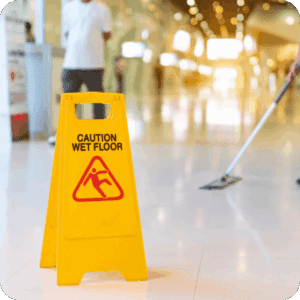Online marketing and social media in particular have changed how the travel decision-making process takes place, forcing travel brands to adapt their marketing accordingly. Yet, not everyone adapts at the same rate, and there are still many who question the worthiness of efforts in this sphere. Among frequently asked questions (FAQ) I often get on my blog or during and after conferences or workshops I give, I thought I would share a few of my favorites ones. In no particular order, here we go!
1. Which social media should I prioritize?
 The answer to this question, and pretty much to all other questions in this post, varies according to size of organizations, resources (both financial and human), marketing priorities and, more importantly, level of maturity with social media accounts. Having said that, some social media are a better fit with the travel vertical, in particular those which emphasize visual components and tell a story. Here's a snapshot of key social media and why travel brands use them in general:
The answer to this question, and pretty much to all other questions in this post, varies according to size of organizations, resources (both financial and human), marketing priorities and, more importantly, level of maturity with social media accounts. Having said that, some social media are a better fit with the travel vertical, in particular those which emphasize visual components and tell a story. Here's a snapshot of key social media and why travel brands use them in general:
- Facebook: great for building a thriving community, engage conversation with present and past customers, seek feedback (R&D), answer questions and create buzz around given stories, promotions or contests.
- Twitter: useful for customer service, in particular with airlines and leading hotel chains, but also to reach out to influencers, media relations and bloggers. Great listening tool as well, to get the pulse of the market and understand sentiment towards your brand.
- Instagram: Since acquired by Facebook, it's become a necessary tool of the marketing mix to share photos and videos from travelers, destination, hotels and attractions. Also great for contests and content curation, as part of a content strategy together with Twitter, Facebook, blog posts and newsletters.
- Pinterest: a key player at the aspirational stage of the travel decision-making process, Pinterest recently launched its Place Pins feature, realizing how many boards and pictures stem from travel-related boards. An important source of traffic towards travel brand websites. Read also: Pinterest and Travel: A Match Made in Social Media Heaven
- YouTube: the video platform, owned by Google, is the second most important search engine on the web. With tourism-related searches in the 18-34 year-old demographic, it is actually number one. Need I say more?
- Linkedin: the professional network is pertinent for lead acquisition and identifying key people in companies, specially from a B2B perspective, i.e. reaching out to meeting planners, tour operators or the right person in sales, HR, or marketing in a given organization. Discussion groups are also a key feature, with over 1.5 million of them, many of which involve the travel industry.
- TripAdvisor: with over 100 million comments and 260 million monthly visitors, travel brands need to manage their presence and online reputation by responding to comments (see question #2 for more on this).
Different travel brands will have different priorities. For example, a hotel brand ought to focus on TripAdvisor and Facebook, then perhaps on Twitter and other social media, depending where the bulk of their audience is active and wants to engage with the brand. A summer festival, on the other hand, will focus more on Facebook and YouTube (perhaps also Instagram and Vine), since video comes in handy to highlight bands or artists that are part of their program.
2. Should I respond to every comment posted on TripAdvisor?
Yes. Any other question?
OK, fine, if you insist… Truth be told, you really should try to respond to as many comments as possible on TripAdvisor, Yelp and other review sites. Doing so, you not only answer to the review itself and the person who wrote it, but more importantly to all other folks viewing the comment and answer. With millions of monthly visitors – Yelp for example has 40 million unique visitors per month, mostly focused on restaurant reviews – it is therefore crucial to respond to show you care, and that you are addressing the facts exposed, whether they are positive or negative.

TripAdvisor TripBarometer, March 2013
But, knowing many small and medium organizations have very limited time and resources to handle marketing and sales, the important thing is to ensure you respond with a given frequency or rule of thumb. For example, some hotels decide to respond to all negative comments, and respond to one out of every three positive comments. There's no right or wrong here: the important thing is to have a system in place, stick to it, and respond. Regularly.
3. Is there a best time to post?
Yes, and it's on Tuesday afternoon, at 4:01pm. (Heck, I remember reading a study that seriously claimed that was the best moment to get a retweet. Whatever) Seriously, only you can figure this one out. This past summer Facebook improved its page analytics, allowing to see when your fans are most active per time of day, and per day of the week. Same goes with sending out newsletters, tweeting news or publishing a new blog post: brands who achieve best results are those who test, segment and tweak according to results.

Gap between brand postings and when people are active online. Source: Buddy Media, Fall 2012.
One thing is for sure: you can't stick with cookie-cutter approaches, such as posting from Monday to Friday, between regular working hours (9am to 5pm). Affluent travelers may consume your content at work, but many do so from their mobile devices, including tablets at home during evening time. Thus many travel brands find that posting during the evening or early in the morning on weekend yields better results than during regular weekly hours.
4. How often should we post?
That's a tougher nut to crack, as the answer will vary depending on the social media being used. On Facebook, per example, the average life expectancy of a post is 2.5 hours while a tweet without hashtag will last a couple of minutes, at most. So posting 1-3 times per day on Facebook will do the trick, while you can tweet 15 times a day and won't offend anyone… At the end of the day, it all boils down to what you have to say and more importantly, what customers want to hear. Travel brands savvy on social media tend to vary the types of content, i.e. text, photos, videos, contests, questions, etc. in order to keep content always fresh and relevant.
In fact, whether you post once per day or thrice per day, the key thing is to be consistent. Nothing worse than brands who stay silent for a couple of days or weeks, and then wake-up with a string of drive-by tweeting or posting like there's no tomorrow…
5. Which is more important: email or social media?
This one is easy: you should use both, since they are equally important. Sending newsletters via email may not be as sexy as new shiny toys like social media, but it serves a different purpose and remains what is considered ‘owned media' while social media is ‘shared media'. Instead of choosing between the two, travel marketers ought to combine the strengths of both. Not to mention that often enough, it won't be the same people following you on either channel and even when some folks subscribe to your newsletter AND like your Facebook page, they may not see the same information twice simply because of the noise level out there (or because EdgeRank may have blocked the post on Facebook, anyway… see question #8 for that one)
For more on this, read Email is Dead… NOT!
6. Should we bother with Google+?
Google+ is certainly talked about a lot, and marketers seem to understand the advantages of sharing content on this platform for search engine optimization purposes. It is said that Google+ is now the second biggest social media after Facebook in terms of active users, with over 600 million users, yet whenever I ask audiences "who uses Google+", it seems like a minority of people actively engage on this platform. But since Google+ is at the heart of Google's new search paradigm, where every ‘+1′ signal is taken into consideration, brands should secure a minimal presence there, assuming they have their priorities straight (see question #1).
Read also: Is Google+ really the 2nd most popular social network?
7. Can we calculate the ROI of social media initiatives?
There's been countless research and articles on this topic, and I even gave it a shot back in 2011 with What is the ROI of Social Media in Travel, and Does it Matter? The biggest misconception here is that ROI is often used for sales-driven tactics while social media encompasses a lot more than sales. In fact, social media in travel is most effective at the inspiration stage and during the travel experience itself, as people share their stories with their network. That's not to say that social media can not and should not be measured. It simply means brands need to clearly outline what it is they want to measure, define what success looks like, and track accordingly.
Read also: The 7 Business Drivers of a Social Media Strategy
8. How can we get better Facebook engagement?
By blending organic content and paid content with occasional contests and offers. In fact, these are considered the 4 key elements of your Facebook marketing. That's right, long gone are the days when a brand page could strive on organic content alone, with dynamic community managers asking questions, posting pictures or crafting contests to increase fan engagement. These tactics still work, but unfortunately less, as this recent AdAge articleclearly stated.

Understanding Facebook's EdgeRank certainly helps to gain better knowledge in using the platform, even with recent enhancement such as Story Bump and Last Actor, or recent tweaks favoring links to quality articles instead of visuals and memes that are perceived as more ‘flaky' content. But at the end of the day, it is now a given that in order to have a highly engaged community on Facebook, you will need to boost some posts, sponsored stories or have some paid content make its way into users' newsfeed to maintain a high level of efficiency on Facebook.
About the author
Senior marketing and communications expert & speaker with 18 years expertise in the travel and hospitality industry. Consulting since early 2012, I provide strategic planning, social media & mobile development counseling to small and medium businesses alike. Reach me at frederic@gonzomarketing.biz














